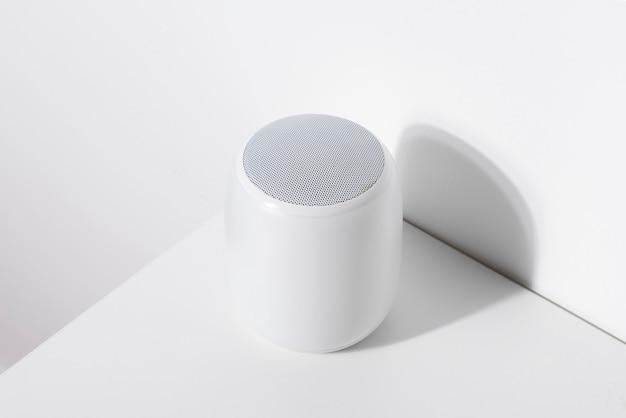Are you tired of the same old wired speakers cluttering up your desk? Do you crave the freedom to move around while enjoying your favorite tunes? If so, a Bluetooth speaker is the perfect solution for you! With its wireless capabilities, you can connect your speaker to your Windows 10 computer and enjoy high-quality sound without the hassle of cables.
But what happens when you encounter the frustrating issue of your Bluetooth speaker being connected but producing no sound? Don’t worry, my fellow music lover! In this blog post, we will explore some common reasons why this problem occurs and provide you with practical solutions to get your Bluetooth speaker rocking again in no time.

1. Check the Basics
Before we dive into the technical stuff, let’s start with the basics. Sometimes, the simplest solutions are the most effective. Here are a few things you can check:
- Volume: It may sound obvious, but make sure the volume on your Bluetooth speaker is turned up. Sometimes, we overlook the simplest things!
- Mute: Double-check that your speaker is not muted. It’s easy to accidentally hit that mute button and wonder why there’s no sound.
- Battery: Ensure that your Bluetooth speaker has enough battery power. Low battery levels can cause audio issues.
2. Update Bluetooth Drivers
Outdated or incompatible Bluetooth drivers can cause a myriad of problems, including the lack of sound. To update your Bluetooth drivers in Windows 10, follow these steps:
- Press Windows + X on your keyboard and select Device Manager from the menu.
- Expand the Bluetooth category.
- Right-click on your Bluetooth device and select Update driver.
- Choose the Search automatically for the updated driver software option.
- Windows will search for the latest drivers and install them if available.
Once the drivers are updated, restart your computer and check if the sound issue is resolved.
3. Restart Bluetooth Services
Sometimes, the Bluetooth services on your Windows 10 computer may encounter glitches, leading to sound problems. Restarting these services can often resolve the issue. Here’s how you can do it:
- Press Windows + R on your keyboard to open the Run dialog box.
- Type services.msc and press Enter.
- In the Services window, locate Bluetooth Support Service.
- Right-click on it and select Restart.
After the services have restarted, reconnect your Bluetooth speaker and check if the sound is working.
4. Remove and Re-pair the Bluetooth Speaker
If the previous steps didn’t solve the problem, try removing and re-pairing your Bluetooth speaker. This process can help establish a fresh connection and resolve any underlying issues. Follow these steps:
- Open the Settings app on your Windows 10 computer.
- Go to Devices and select Bluetooth & other devices.
- Under the Audio section, locate your Bluetooth speaker and click on it.
- Select Remove device and confirm the action.
- Put your Bluetooth speaker in pairing mode according to its instructions.
- On your computer, click on Add Bluetooth or other device and select Bluetooth.
- Choose your Bluetooth speaker from the list of available devices and follow the on-screen instructions to complete the pairing process.
Once the pairing is successful, play some music and see if the sound is now coming through your Bluetooth speaker.
5. Check Audio Output Settings
Windows 10 allows you to choose the audio output device for different applications. It’s possible that the sound is being directed to a different device, causing your Bluetooth speaker to remain silent. To check and adjust the audio output settings, follow these steps:
- Right-click on the Volume icon in the system tray and select Open Sound settings.
- Under the Output section, click on the Choose your output device dropdown menu.
- Select your Bluetooth speaker from the list of available devices.
Now, try playing audio again and see if your Bluetooth speaker is producing sound.
6. Test with Another Device
To determine if the issue lies with your Windows 10 computer or the Bluetooth speaker itself, try connecting the speaker to another device, such as a smartphone or tablet. If the speaker works fine with the other device, it indicates that the problem is specific to your Windows 10 computer. In that case, you may need to delve deeper into your computer’s audio settings or seek further assistance.
7. Seek Professional Help
If all else fails, it’s time to call in the experts. Reach out to the customer support of your Bluetooth speaker manufacturer or consult a professional technician who specializes in audio devices. They will have the knowledge and expertise to diagnose and fix any hardware or software-related issues that may be causing the sound problem.
Conclusion
Dealing with a Bluetooth speaker that is connected but not producing sound can be frustrating, but fear not! By following the troubleshooting steps outlined in this blog post, you’ll be back to enjoying your favorite tunes wirelessly in no time. Remember to check the basics, update your Bluetooth drivers, restart Bluetooth services, remove and re-pair the speaker, check audio output settings, and test with another device. And if all else fails, don’t hesitate to seek professional help.
Now, go forth and rock out with your Bluetooth speaker, my friend! Happy listening! 🎵🔊